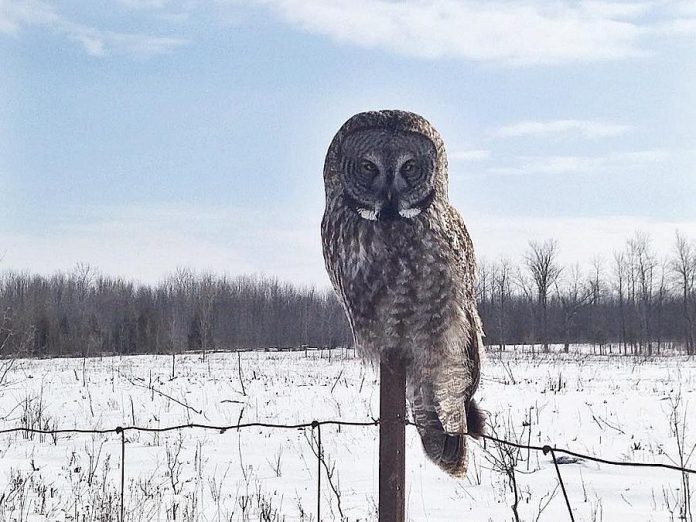
If you were out trick-or-treating on Halloween last night, among the carved pumpkins and front-yard decorations you may have seen symbolic creatures with spooky reputations. Bats, spiders, and owls are some of the most celebrated Halloween animals. Striking fear in our hearts, these animals have a long history of mystery and the supernatural.
Let’s shed some light on those creatures of the night!
A fear of the dark is a fear of what hides within it. Many of us may remember that as children we were afraid of the monsters under the bed or the skeletons in the closet. The hairs on the back of our necks would stand on end as we heard the floor creak in the night. There is something about darkness that scares us.
As human beings, we rely heavily on our sense of sight, which is blinded during darkness. Imagination makes up for our lack of ability to see in the shadows. Fear of the dark is part of an evolutionary impulse to stay safe. Early humans were genetically hardwired to avoid predators at night, a trait that sticks with us today.
Alternatively, many animals need the dark. Many species have evolved to be nocturnal, whether to escape the heat of the day or to hunt, mate, and avoid predators. To survive, these animals have developed a keen sense of hearing, smell, and night vision.
While they might seem frightening to us, these ‘haunted’ animals have an important role to play in our local ecosystems.
Bats

Bats have long been associated with the powers of darkness. As the only flying mammal, bats funnel out of caves, rooftops, and hollowed trees at twilight. Historically, they have been depicted as devils of the underworld, emerging from the darkness to feed on human blood. This misconception has tied bats to one of the iconic costumes of Halloween: the vampire!
In reality, out of the approximate 1,200 bat species found in the world, only three have been linked with drinking blood.
When walking through GreenUP Ecology Park in the Spring, bats can be found roosting in the top of the park’s gazebo. Once they are pointed out, it is surprising how many people immediately comment on how cute they are. They are not the large, scary, and ugly beasts that they are often portrayed as, but are actually small and furry, which makes them as relatable as any other mammal species.
Most of us are unaware of the service that bats provide to the human population. They play a huge role in regulating the mosquito population. One brown bat can eat 1,000 mosquitos in an hour!
In Eastern Canada, most bat populations are at risk due to White Nose Syndrome. Large swathes of roosting bats have disappeared, especially the Little Brown Bat.
You can invite bats into your own yard by installing a bat house. Bat houses are flat, wooden, open-bottomed boxes containing several partitions for roosting bats to grasp onto. Although bat houses are relatviely small, they can house approximatley 200 bats, giving you some great mosquito control in your yard, while helping to boost bat population numbers.
Spiders
Spiders are often considered creepy and crawly, as most of them prefer to hide during the day and spin their webs in dark corners or forgotten places. Many species are nocturnal, hiding away during the day to avoid predation.
“I love spiders,” says Drew Monkman, local author and naturalist, “They’re so interesting, and important. They’ve been around since well before the dinosaurs and actually evolved from crab-like ancestors. Looking at a spider is like peering into the deep past.”
Similar to our fear of the dark, it is believed that our adverse reaction to arachnids is an evolved trait. We may fear spiders, but they are important to the food web.
“Spiders provide nutrient-rich meals for countless kinds of birds,” Monkman says. “Hummingbirds love them!”
Owls

Owls are great predators of the night, who were once believed to be able to transform into witches.
Owls have exceptional night vision, with eyes that are half the volume of their head. They are also able to turn their head 270 degrees to see prey in almost every direction. The screech of an owl was once considered to be an omen of doom, which has linked owls to hauntings and as a spooky addition to your Halloween decor.
Owls consume mice, moles, and voles, making them important pest controllers. Owls are also experts in camouflage, making them difficult to see during the day.
For this reason, you may not actually see an owl on your next walk through Burnham Woods, Jackson Park, or Trent Nature Areas, but you can look for evidence of their presence.
Look for whitewash, which is the equivalent of urine in mammals. It builds up at the base of trees under owl roosting spots.
You may also find an owl pellet, which is the regurgitated indigestible remains of an owl’s meal, containing mainly fur and bones from mice and other prey.
It may become harder to view some animals that are traditionally active during the day. New research suggests that diurnal, or daytime animals, are switching over to be active during the night. Human encroachment may be driving animals into the dark 1.36 times more, when compared to their counterparts that live in areas with low human disturbance rates.
For example, in Canada, Grizzly Bears have been shown to avoid hikers by switching to being active during the night. We don’t know yet how the switch from dirunal behaviour to nocturnal will affect predator-prey relationships and the ecosystem at large, but it may add to the number of spooky creatures that we fear are lurking in the night.


























